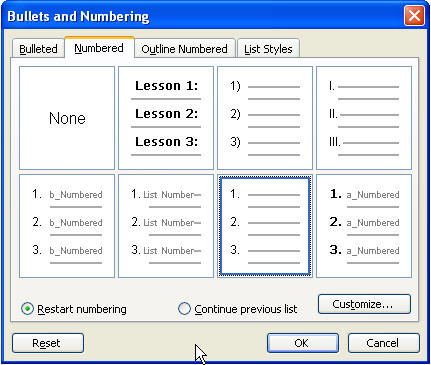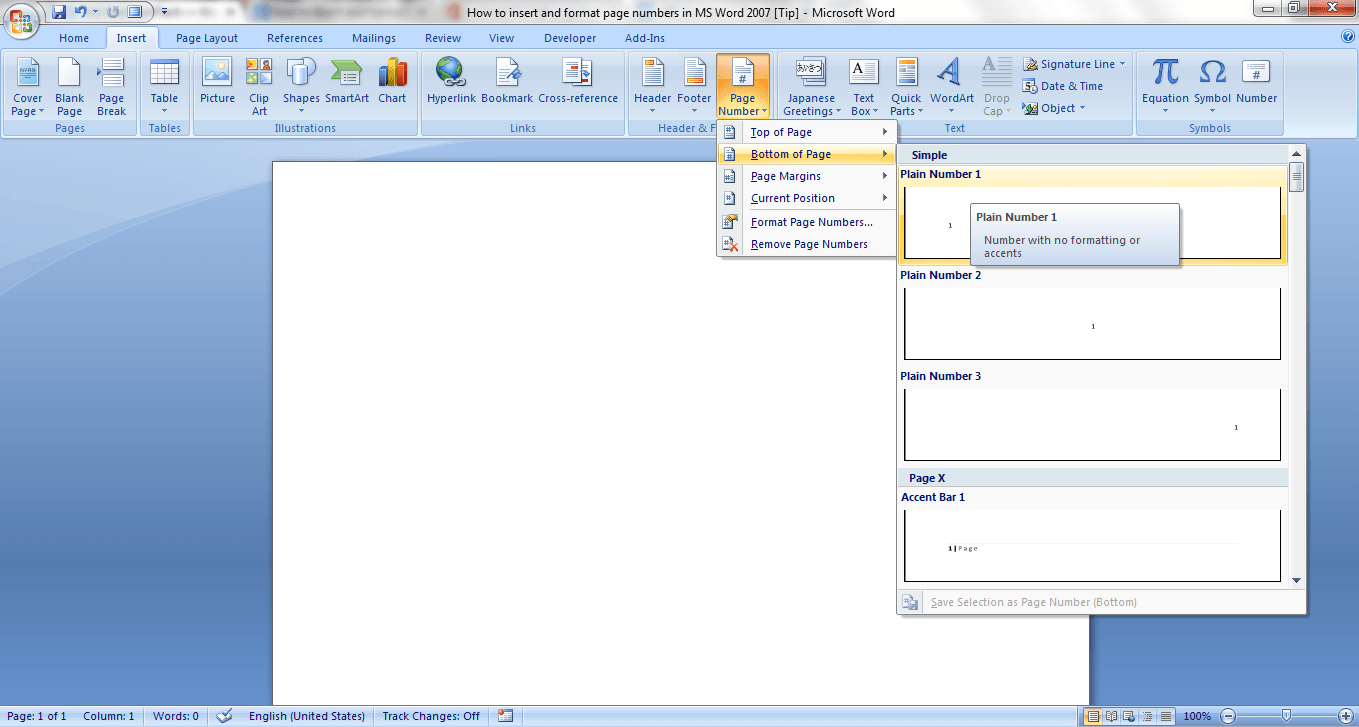


(See the info on this earlier in this tip.) If you get an error message at this point, it means that you didn't specify a multilevel list to be used with the headings in your document. Drag the specified page you will move, and then drop to. And now you will see the headings are shown as page numbers. Click the Headings tab on the Navigation Pane. Use the Use Separator drop-down list to specify a character to use between the chapter number and the page number. Please repeat this step to type and format as Heading 1 at the beginning of, , type Page N and format as Heading 1 at the beginning of Page N.As already described, this will be a style such as Heading 1. Use the Chapter Starts with Style drop-down list to specify the style you are using to indicate the beginning of each chapter.

How to format page numbers in word 2003 how to#
In other WordTips issues you learn how to specify the starting page number to be used within a document. Typically, page numbers are placed in either your headers or footers so that they appear on each page of the document. Stage directions go for 2.5 inches before wrapping, so that it makes a nice little centered paragraph on your page.Word provides many different ways you can set up and use page numbers in your documents. Type your stage directions in parenthesis, 2.75 inches from the left side of the page.

Also, dialog has no special right margin, only the 1-inch margin you set at the beginning. If you are typing dialog, begin all the way at the left margin, which is set to 1.5 inches. On the line directly below the character's name, you will begin to type the dialog he is speaking, or the action he is performing. When it is time for a character to speak (or perform an action), you type the character's name in all caps, centered on the page. Use Roman numerals for the act names and Arabic numerals for the scene names. Enter down two spaces and type the scene name using the same format. To begin an act and a scene, center your text and type the name of the act and underline it (all in caps). The different elements of your script (characters, dialog, stage directions, etc.) are all placed differently on the page, but they follow a standard format that you can save as a template. The top, bottom and right margins should all be set to 1 inch. You will have to adjust this when you get to Act II, and so on. If you want only the page number, go to "Insert" and "Page Numbers." If you would like to number each act, go to "View" and "Headers and Footers" and have Word add "Act I" (note the Roman numerals) to the top of the page. At this point, you have to decide if you want to have the act number with the page number, or just the page number by itself. This page-and the pages after it-need to have page numbers. This will be the first page of your script. Hit "Enter" until you are on the next page. In the lower right-hand corner of the page, put your contact information, minus your name. Type the title of the play in all caps, go down the page two spaces and type "by," then two more spaces and type your name. Center the text and hit the "Enter" key until you have moved the cursor down about 3.5 inches. This will give whomever is reading your play (agent, actor, director, etc.) all the basic information they need. Make the first page of the document your cover page. Save this document with a title that you and others will easily recognize as your play. Open Microsoft Word and click "File" and "New" to create a blank document.


 0 kommentar(er)
0 kommentar(er)
